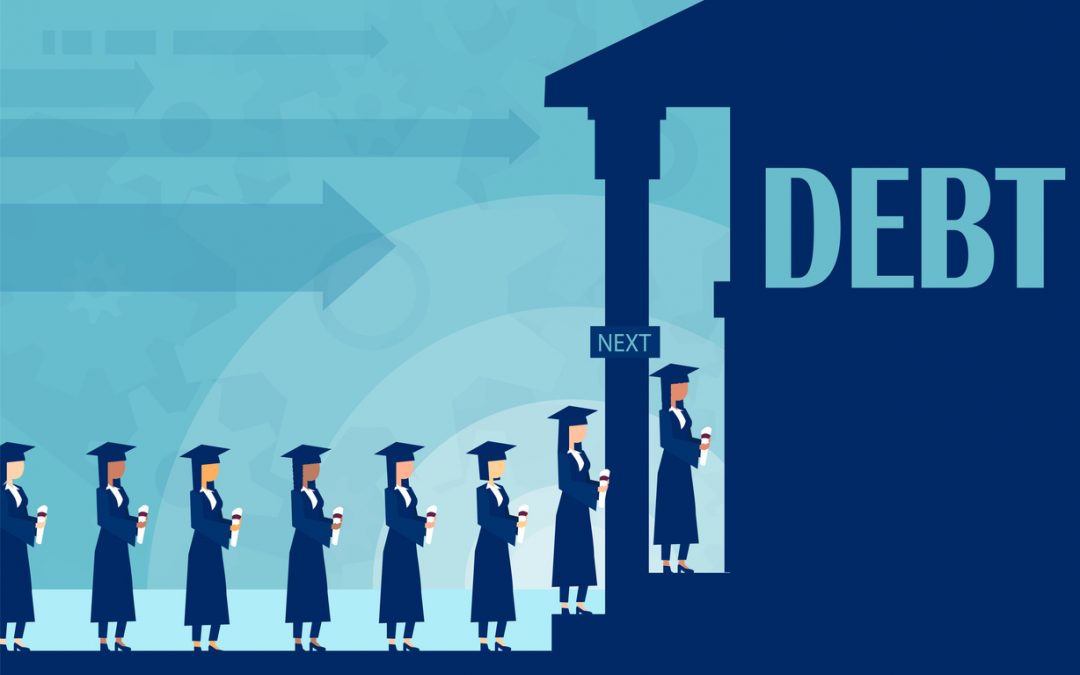Understanding Student Debt
Student debt refers to the amount of money borrowed by students to finance their higher education expenses. Unlike other types of debt, such as credit card debt or mortgage loans, student debt is specifically used to cover the costs of tuition, books, housing, and other educational expenses.
Common sources of student debt include federal student loans, private student loans, and institutional loans offered by colleges and universities. Additionally, some students may accumulate debt through credit cards or personal loans to cover extra expenses not included in their financial aid packages.
The impact of student debt on individuals can be significant, leading to financial stress, limited job opportunities, and delayed milestones such as homeownership or starting a family. On a societal level, student debt can also contribute to economic inequality and hinder overall economic growth as graduates struggle to repay their loans and contribute to the economy.
Types of Student Loans

When it comes to financing higher education, there are various types of student loans available to students. These loans can be broadly categorized into federal student loans and private student loans. Each type has its own eligibility criteria, terms, and conditions. Understanding the differences between federal and private student loans is crucial for making informed decisions about financing education.
Federal Student Loans vs. Private Student Loans
Federal Student Loans:
– Offered by the U.S. Department of Education.
– Have fixed interest rates set by the government.
– Provide various repayment plans and options for loan forgiveness.
– Usually do not require a credit check or a co-signer.
– Offer benefits like deferment, forbearance, and income-driven repayment plans.
Private Student Loans:
– Issued by private lenders like banks, credit unions, or online lenders.
– Interest rates may be fixed or variable and are based on creditworthiness.
– Repayment terms and options vary by lender.
– Typically require a credit check and may need a co-signer for approval.
– Do not offer the same borrower protections as federal loans.
It’s important to exhaust federal student loan options before considering private loans due to the borrower benefits and protections offered by federal programs.
How Interest Rates Work for Student Loans
– For federal student loans, the interest rate is determined by Congress and remains fixed throughout the life of the loan.
– Private student loans may have fixed or variable interest rates based on the lender’s terms.
– Interest accrues on the outstanding balance of the loan and is typically calculated daily.
– Making timely payments can help reduce the total amount of interest paid over the life of the loan.
Managing Student Debt

Managing student debt can be overwhelming, but with the right strategies, it is possible to reduce the burden and navigate through repayment effectively.
Creating a Budget
One of the key steps in managing student debt is creating a budget specifically tailored to handle student loan payments. By outlining your income, expenses, and loan obligations, you can better track your finances and ensure timely payments.
Tips for Loan Forgiveness Programs
- Research and understand the eligibility criteria for loan forgiveness programs offered by the government or specific professions.
- Submit all required documentation accurately and on time to maximize your chances of approval.
- Stay informed about any updates or changes in the forgiveness programs to take full advantage of the benefits.
Repayment Plans
- Explore different repayment plans, such as income-driven repayment options, to find one that aligns with your financial situation.
- Consider consolidating multiple loans to simplify payments and potentially lower interest rates.
- Communicate with your loan servicer to discuss any difficulties in making payments and explore possible solutions or adjustments.
Consequences of Defaulting on Student Loans

When a borrower defaults on their student loans, it can have serious repercussions on their financial well-being. Defaulting occurs when a borrower fails to make payments on their loans for an extended period of time, usually around 270 days.
Impact on Credit Scores and Financial Future
Defaulting on student loans can significantly damage a borrower’s credit score. A lower credit score can make it challenging to secure future loans, credit cards, or even rent an apartment. This can have long-lasting effects on the borrower’s financial stability and ability to make major purchases, such as buying a car or a house.
Options for Borrowers in Default
Borrowers who are in default on their student loans have several options to resolve their debt. One common option is loan rehabilitation, where the borrower agrees to make a series of consecutive, on-time payments to bring the loan current. Another option is loan consolidation, which combines multiple student loans into one new loan with a fixed interest rate.
- Loan Rehabilitation: Borrowers can work with their loan servicer to come up with a repayment plan to get the loan out of default status.
- Loan Consolidation: This option allows borrowers to combine multiple federal student loans into a single loan with a fixed interest rate, simplifying the repayment process.
- Income-Driven Repayment Plans: Borrowers in default may be eligible for income-driven repayment plans, where monthly payments are based on the borrower’s income and family size.